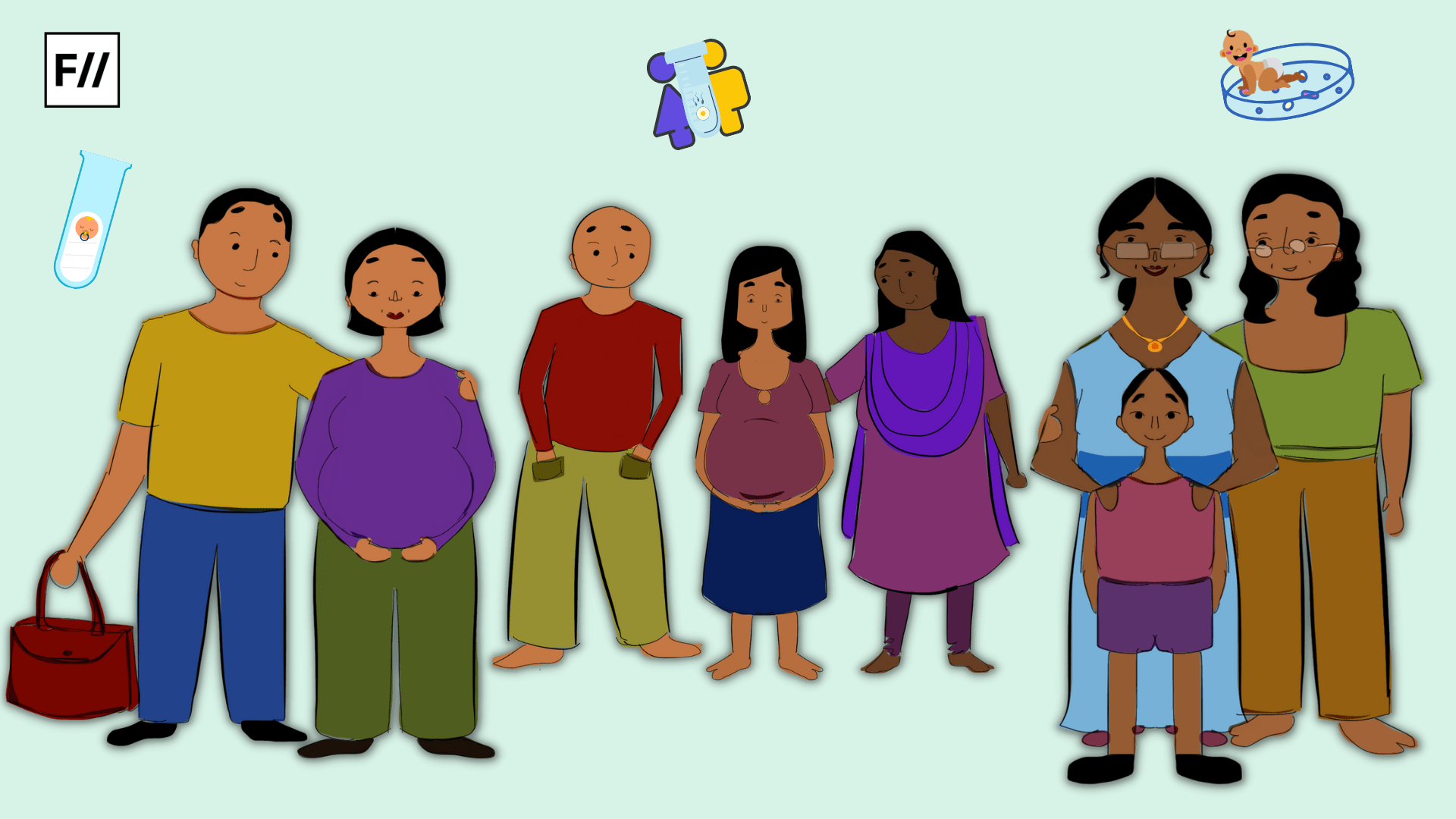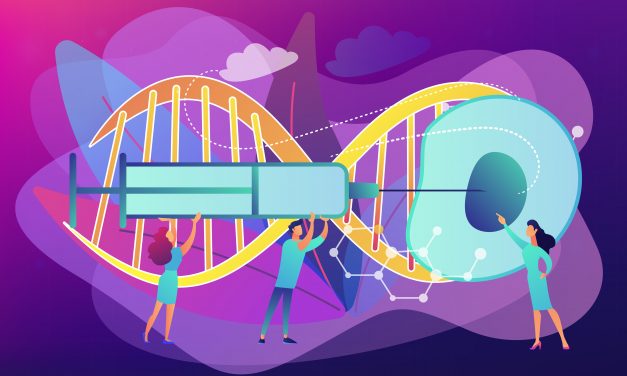Editor’s Note: FII’s #MoodOfTheMonth for August 2022 is Gender and STEM. We invite submissions on the many layers of this theme throughout the month. If you’d like to contribute, kindly refer to our submission guidelines and email your articles to sukanya@feminisminindia.com
Science fiction movies on Artificial Intelligence(AI) have always amazed and perplexed us as to how automation could reform our day-to-day lives. We have seen movies where robots or in the more general sense, AI could take care of our routine activities like taking care of a baby. But does that really happen? The answer is surprisingly in the affirmative. Not in the sense of a robot taking care of a baby but, in the process of facilitating the birth of humans, and this process includes an array of related aspects.
The term AI was introduced by John McCarthy at the Dartmouth Conference in the year 1955 and it has evolved through the years from being a machine with advanced technology to thinking like and out-thinking humans. AI also has multiple applications in different fields like education, military, agriculture, medicine, etc. It is popularly defined as, “. . . the ability of machines to learn and display intelligence, which is in stark contrast to the natural intelligence demonstrated by humans and animals.”

Assisted Reproductive Technology (ART) is a scientific means to facilitate the reproduction of humans via technological interventions, and it has successfully developed and yielded better results in the past few years. But what if, the results are doubled or tripled with the help of AI? This is the mesmerising question before future parents. According to Renjie Wang and others, the broad spectrum of medicine, radiology, cardiology, and oncology have benefitted from AI application. Then, why not in the area of ART?
Automation is also capable of redefining traditional female roles like carrying babies. In the 1970s, the radical feminist Shulamith Firestone introduced the idea of artificial wombs carrying babies in her work, “The Dialectics of Sex: The Case for Feminist”, as a way to liberate women from the stereotypical notion of the sole nurturer
Already, many machine learning techniques and strategies are carefully implemented in ART to improve its performance radically and it can help physicians to suggest the appropriate therapy for infertility by combining ART and AI. ART basically focuses on oocyte and embryo cryopreservation, assisted fertilisation, embryo selection and preimplantation genetic testing.
IVF or in vitro fertilisation is an important part of ART and one of the crucial steps involved in this is egg, sperm, or embryo selection. There is no single, safe method to select it appropriately. Therefore, several strategies are used in the process. Even then, miscalculations can destroy the entire process. It happens because humans cannot analyse and retain all the data together to formulate a probable decision.
Nevertheless, it can be accurately done by AI – it is fed with all the diagnosis results, and reports (even the ones prepared by doctors), and then, each of these is individually analysed by the AI to predict the probable cause and effect. It is opined that “An integrated AI component with image analysis would increase recognition efficiency, reduce errors . . .” But, they also assure that the feeding of insufficient data to AI can reduce the success of predictions.
Also read: Artificial Reproductive Technologies: Reimagining The Notions Of Parenthood
Another area in ART where AI is utilised includes the delivery of infants during labour. But the arguments surrounding those fall into two categories. Some statistics show that the right application of robots in incision and stitching can reduce the risk of blood loss and injury. At the same time, the improper use of robots can negatively impact the whole process.
However, all studies duly emphasise the physical presence and monitoring by a medical doctor to take the right decision in the execution of AI to yield better results. In other words, the development of AI as an autonomous system in ART has not yet been realised.
Such kinds of inventions would indeed give a chance for many infertile individuals to birth while, others can opt for it to free themselves of the tribulations of pregnancy. It also gives individuals with non-viable uteruses or those who have lost their uterus due to accidents, disease, or other conditions, an option to become parents. It helps queer individuals to also fulfill their dream of parenthood without the additional cost of surrogacy
Automation is also capable of redefining traditional female roles like carrying babies. In the 1970s, the radical feminist Shulamith Firestone introduced the idea of artificial wombs carrying babies in her work, “The Dialectics of Sex: The Case for Feminist”, as a way to liberate women from the stereotypical notion of the sole nurturer.
An artificial womb, “is a bio bag . . . which makes it possible to conceive a child outside of the human body. Ectogenesis, a scientific term, refers to a pregnancy that develops outside of the uterus.” AI-based artificial wombs work by keeping conditions under check as in a natural womb, like balancing the level of nutrition, oxygen, and other factors. As a first step toward this, Japanese scientists have successfully grown goats from artificial wombs and also have grown human embryos for up to ten days.
Recently, the Suzhou Institute in China developed such AI-based wombs in January this year, though the rumors suggest it as an immediate act to bring back the falling population rate in China. This ‘AI nanny’ is now used for carrying animal embryos, as said in the peer-reviewed Journal of Bio-Medical Engineering.

Such kinds of inventions would indeed give a chance for many infertile individuals to birth while, others can opt for it to free themselves of the tribulations of pregnancy. It also gives individuals with non-viable uteruses or those who have lost their uterus due to accidents, disease, or other conditions, an option to become parents. It helps queer individuals to also fulfill their dream of parenthood without the additional cost of surrogacy. But at the same time, AI-based childbirth includes many ethical issues, since all of this happens outside the human body that gave life to babies up until now.
Giving birth to a baby through natural labour is an individual choice, and it involves both joy and pain for most people. The painful part of this journey in the case of women is politically erased by society, thereby decimating the role of a female as a birth giver and feeder. With the application of AI in this area, women will also get a chance to choose their career and personal accomplishments over the much-stressed labour of childbirth.
It can radically change the way the concept of ‘gender’ is viewed, including all sexualities. This is because it can create a new space for inclusive parenthood and reasonably reduce the stigma surrounding the social, and gender role of individuals as fathers or mothers.
Nonetheless, the ethical and moral issues surrounding such new modes of birth are still under heated discussion in our society. For instance, Taslima Nasrin’s (a famous writer and feminist) recent tweet on Priyanka Chopra’s surrogacy: “Surrogacy is possible because there are poor women. Rich people always want the existence of poverty in society for their own interests. If you badly need to raise a child, adopt a homeless one. Children must inherit your traits—it is just a selfish narcissistic ego.”
Also read: Infertility Advertisements: Reinforcing Gender Roles Through Reproductive Desire
She later said that her remarks were never directed at the Priyanka-Jonas couple. It is true to conclude that surrogacy has intersectional layers to it, especially in a country like ours. When surrogacy itself is not a practice that happens out of the free will, separate from financial coercion, the introduction of artificial wombs controlled by AI can invoke serious discussions centering on accessibility, culture, and gender roles.
However, all technological interventions must, in the end, pave way for accessibility and address the concerns of all sections of society. If that is not possible, then such interventions will remain pointless and exclusive.
Vidhupriya is an independent researcher, currently pursuing a Bachelor of Education. She is a Post Graduate of English Literature and Language from the Institute of English, Kerala University. She can be found on Facebook, LinkedIn and Instagram.
Featured Illustration: Ritika Banerjee for Feminism In India
About the author(s)
Vidhu (she/her) is an emerging writer with Masters in English language and literature, keen on learning the politics of the world around her. She has dreams to create a career in journalism and writing, where she unburdens her self. She has a great taste for movies from varies geographical spans and pens down poetry in magical charms. She is open to projects or research centring on humanities.






